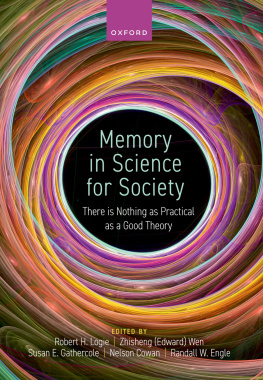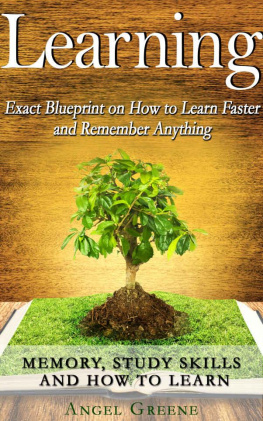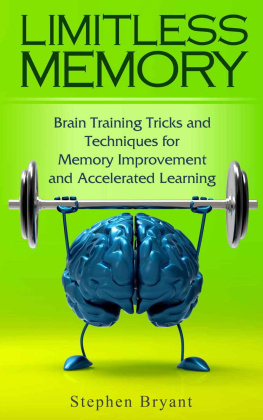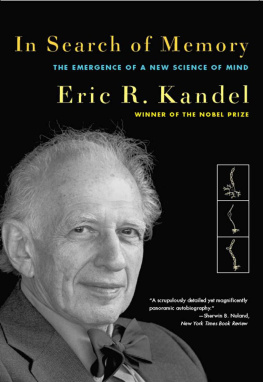The Art of Memorization
The Exclusive Guide to the Development of a Genius-level Memory
BY THE ESTEEMED AUTHOR, LECTURER, AND TEACHER, M.A. Kohain
COPYRIGHT 2016 | M.A. Kohain and The International Test-Guide Publishing House | All rights reserved
Disclaimer
THIS EBOOK IS LICENSED FOR YOUR PERSONAL USE ONLY. THIS EBOOK MAY NOT BE RE-SOLD OR GIVEN AWAY TO OTHER PEOPLE. IF YOU WOULD LIKE TO SHARE THIS BOOK WITH SOMEONE ELSE, PLEASE PURCHASE AN ADDITIONAL COPY FOR EACH RECIPIENT. IF YOURE READING THIS BOOK AND DID NOT PURCHASE IT, OR IT WAS NOT PURCHASED FOR YOUR USE ONLY, THEN PLEASE PURCHACE YOUR OWN COPY TO SUPPORT THE continued advancement of the Art of Memory. THANK YOU FOR RESPECTING THE HARD WORK OF THIS AUTHOR. If you purchased this book, thank you very much and please enjoy!
TABLE OF CONTENTS
Preface
Dear Reader,
What is it that you want most from this book? If you want it to instruct you on ways to improve your ability to memorize, your rate of memorization, and your ability to recall information, then you have chosen wisely in your purchase. This book, first and foremost, is a guide to improving your memory, enabling you to become more successful, whether you are in college or just generally in relation to all things which may benefit from the memorization, understanding, and categorization of terminology and concepts. This author has attempted to put forth in writing, in a concise and informative manner, without any presumptions about the intelligence of the reader, a series of memory techniques which are believed to be capable of aiding the learner in all things requiring memorization as well as both sequential and non-sequential recollection. Furthermore, dear reader, I want to inform you that there will be no dumbing down of the content of this book. I respect you and I will not dishonor your intelligence by doing so. I think that the mere fact that you picked up this book at all is, in a way, proof of either your curiosity, which is essential to most learning, your desire to improve your mind, or both. So, as the author of this book I formally welcome you to the age-old discipline of the Art of Memory, and I deeply hope that you may benefit from its contents.
As for the work itself, it is broken up into twenty-nine parts. In the first few parts, we discuss the origins and nature, of memory and how they relate to human survival. In the intermediary parts of the book, we discuss several techniques of the Art of Memory. And, in the final parts, a series of visualization techniques are given that should be used in combination with the intermediary parts contents.
Sincerely,
M.A. Kohain
Part 1
What is the Purpose of Memory?
Your most noble nature's shining instance, your mind's most vital loftiness, your fully formed humanity's kindness, illustrious Lord Heinz, have summoned, compelled and driven me to reveal to you, as a personal monument of that respect with which I embrace you, one child from among the principal children of my genius, conceived and formed a long time ago. Its main theme is the composition of images, signs and ideas, for the purpose of mastering universal invention, arrangement and memory. Giordano Bruno the Nolan
The quote above has been placed at the start of this book for the sole reason that it encapsulates this current authors personal motivations quite completely, for my intentions are gregarious, and I see you, the reader, as the one whom I serve in writing this book, its purpose being to enlighten on the subject of the development of memory and its arrangement. So, to begin on this journey, I first ask you this question: Why, at all, do we form memories in the first place?
If, when a primate finds itself being hunted by some tiger, is it beneficial for that primate to know that such an animal is, in the first place, a predator? Indeed, it seems that way; that the appearance, the regular quantity, the abilities, the size, strength, and whereabouts of a predator need be remembered by a preyed-upon-animal so that it may flee or avoid danger when a predator is sighted. Such is perhaps the evolutionary origin of memory in human beings, although in modern times the predator is not a tiger but rather a biology exam, a speech or a math test success or failure in those regards now determines ones fate.
What does the college student worry about and fear the most? Is it the wild, hungry, carnivorous pack of lions chasing him or her about the dormitory? Or is it simply failure regarding the dreaded midterm and essay? For just as knowledge of the existence of the various predators of the jungle is necessary for survival in that environment, so too is the knowledge of the content of an exam in the modern classroom. Therefore, would it not be beneficial to our happiness and survival in this day and age to improve our memories and our speed of memorization, so that we may conquer and overcome these modern obstacles to survival? This should probably be considered as a necessary adaptation for many of us, certainly for anyone that finds themselves face to face with a challenging professor.
If you are reading this book, I believe you must truly be an interesting and studious person because the desire to succeed is natural. Nowadays, success is ultimately dependent upon the ability to know, to recall, for success seems to be impossible without first learning and knowing your surroundings. Therefore, we say that the purpose of memory is to know your surroundings in order to survive.
But how exactly does memory relate to survival? Rather, which types of memories contribute toward mans survival in his historical environment? First and foremost and certainly applicable to many other species of animal, are the memories of past feeding grounds; that is, areas where nutrients were or are present, seasonally or otherwise. Furthermore, locations where predators are known to hunt and live must also be remembered and subsequently avoided. In other words, he must remember where to find food and where to avoid so as not to become food.
Secondly, the appearances of edible foods and predators, among many other things, must be remembered. In our modern society, for example, it is important to remember who to trust and even what a trustworthy person might look like! It seems that the rules of the jungle have not changed; the appearance of the jungle has.
Thirdly, it is necessary to remember the meanings implied by certain behaviors as well as how to perform them. These behaviors will probably have something to do with either avoiding predators or finding food. For example, the chimpanzee is known to use sticks to gather termites for consumption. If the chimpanzee did not remember how to perform this action, how could he eat termites? Also, how could a monkey survive if it could not remember that trees can be safe zones from predators? Memory is therefore, and obviously so, very crucial to the survival of preyed-upon animals.
Fourthly, the animal must remember how abundant in resources certain areas are relative to one another and choose accordingly for the sake of its migrations.
And lastly, I think the animal must remember those areas of which he has already been to and which no longer, for the time being at least, have the resources by means of which he may continue to survive. Likewise for modern man, each of these functions of memory enable him to confront the various obstacles to his survival.
Part 2
How are Memories Formed?
In the previous section we went into cursory detail about the origins of memory; the memories causal relationship with survival. But now we ask the question: How are lasting memories formed in the first place? Or, what exactly needs to occur for a memory to become long-term?
Next page










